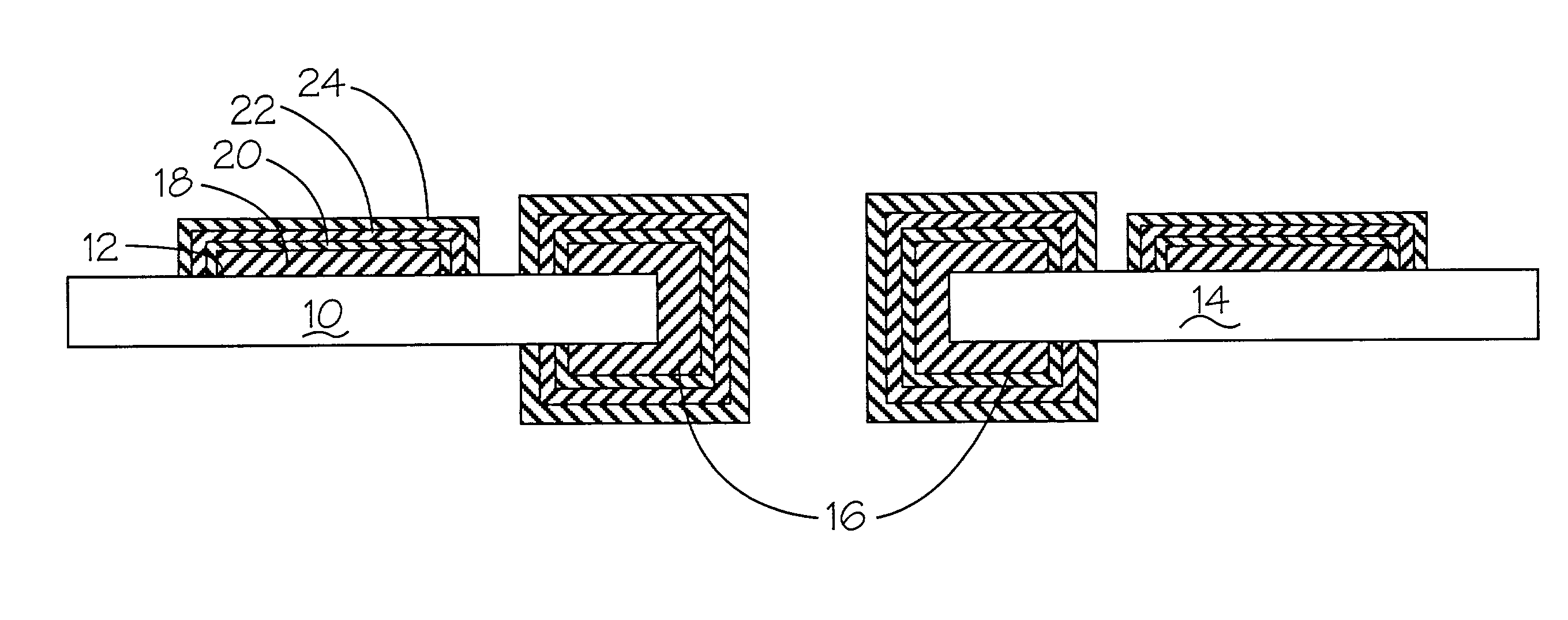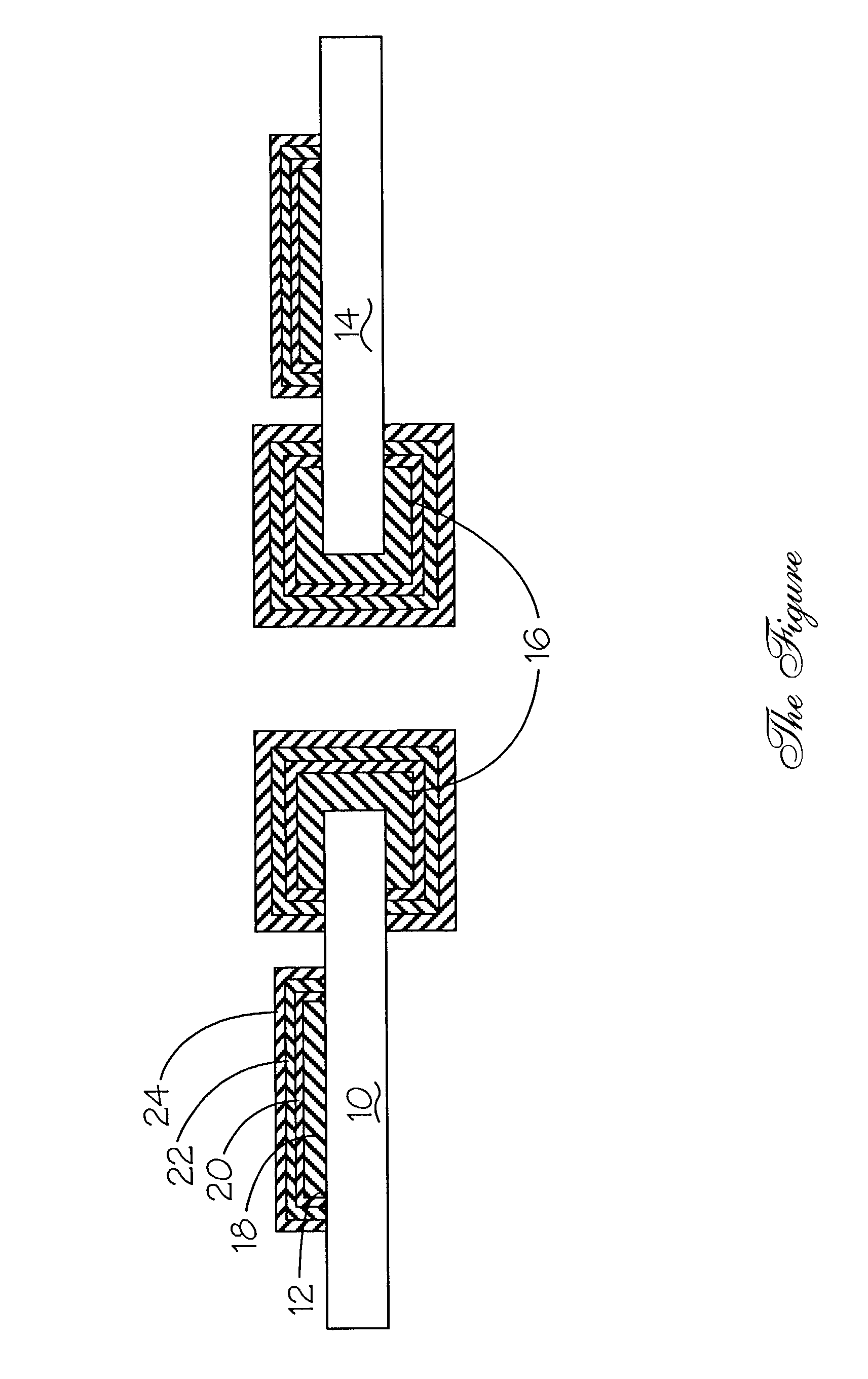Process for manufacturing a printed wiring board
a manufacturing process and wiring board technology, applied in the direction of resistive material coating, metallic pattern coating, metallic material coating process, etc., can solve the problems of not being able to meet the needs of commoning bars for electrical connections, wasting valuable space that could otherwise be used for placement of additional circuitry or other features, and simply being unable to meet the needs of commoning bars, etc., to achieve high conductive
- Summary
- Abstract
- Description
- Claims
- Application Information
AI Technical Summary
Benefits of technology
Problems solved by technology
Method used
Image
Examples
Embodiment Construction
[0026]The present invention provides a printed wiring board that has incorporated as part of its features a connection site or multiple connection sites to external components. Examples of types of connection sites that can be used in this invention are: land grid arrays, surface mount pads, and ball grid arrays. Land grid arrays comprise multiple plated pads to which the external component is attached.
[0027]Examples of such external components include integrated circuit chip carriers, modules, and the like. Physical connection can be made in various ways, including soldering, or by direct physical contact through connectors from the external components. Such external connectors typically have a mechanism ensuring contact by means that create a positive holding force to the connection site on the printed wiring board. The attachment and removal of these external components can cause abrasion, wear, and deformation of the connection sites, especially when these external components ar...
PUM
| Property | Measurement | Unit |
|---|---|---|
| thickness | aaaaa | aaaaa |
| thickness | aaaaa | aaaaa |
| thickness | aaaaa | aaaaa |
Abstract
Description
Claims
Application Information
 Login to View More
Login to View More - R&D
- Intellectual Property
- Life Sciences
- Materials
- Tech Scout
- Unparalleled Data Quality
- Higher Quality Content
- 60% Fewer Hallucinations
Browse by: Latest US Patents, China's latest patents, Technical Efficacy Thesaurus, Application Domain, Technology Topic, Popular Technical Reports.
© 2025 PatSnap. All rights reserved.Legal|Privacy policy|Modern Slavery Act Transparency Statement|Sitemap|About US| Contact US: help@patsnap.com


